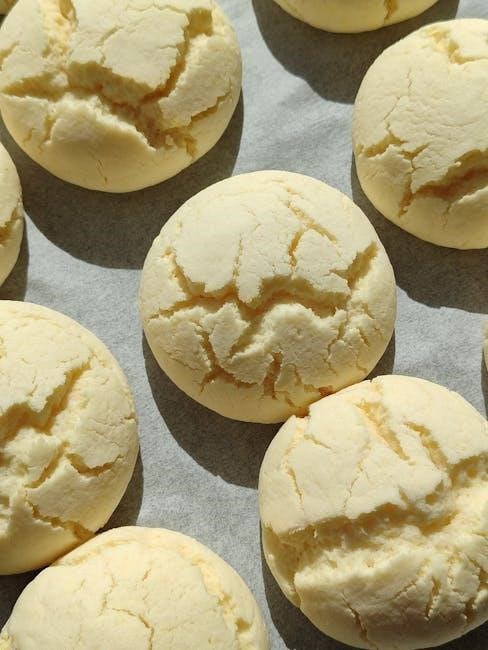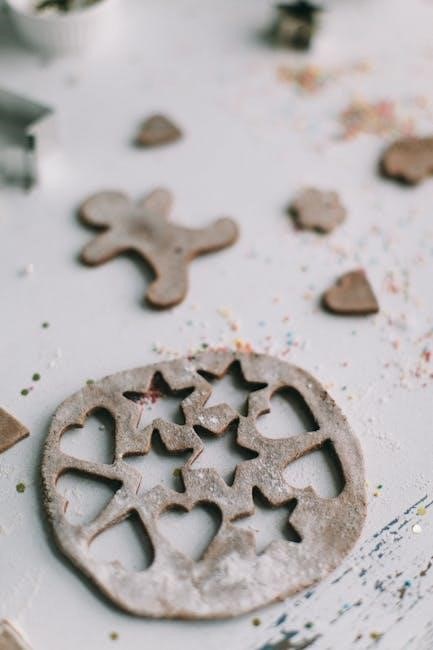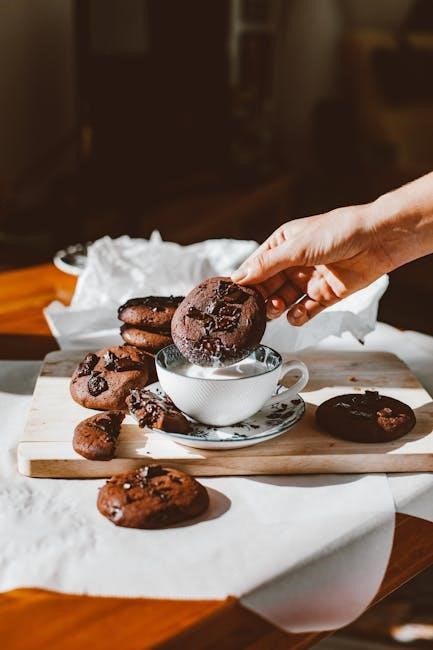GFS Sugar Cookies Baking Instructions: A Comprehensive Guide
Welcome to the ultimate guide for baking GFS sugar cookies! Whether you’re a seasoned baker or a novice, this comprehensive resource will walk you through every step. From understanding the ingredients to mastering the baking process, you’ll achieve delicious, perfectly textured sugar cookies every time. Get ready to create sweet memories!
GFS sugar cookies, often praised for their delightful taste and soft texture, are a popular choice for both casual treats and festive occasions. These cookies, particularly the frozen varieties, offer a convenient way to enjoy homemade-style goodness without the extensive preparation. Many bakers appreciate the consistent quality and ease of decorating these cookies, making them a go-to option for holidays, parties, and everyday enjoyment.
This guide aims to provide you with everything you need to know about baking GFS sugar cookies, focusing on both pre-made dough and potential homemade adaptations. We’ll explore the ingredients typically found in these cookies, discuss essential baking tools, and offer step-by-step instructions for achieving the perfect bake. Whether you’re looking to recreate the GFS experience from scratch or simply want to enhance your baking skills, this comprehensive guide has you covered.
Furthermore, we’ll delve into creative decorating ideas, troubleshooting common baking issues, and even gluten-free alternatives for those with dietary restrictions. By the end of this guide, you’ll be well-equipped to bake and decorate GFS-style sugar cookies that are sure to impress your family and friends. Let’s embark on this delicious baking journey together!

Understanding GFS Frozen Sugar Cookies
GFS frozen sugar cookies offer a convenient shortcut to freshly baked treats. These pre-made cookies come in various shapes, often designed for holidays or special events, saving time and effort in the kitchen. Understanding the characteristics of these frozen cookies is key to achieving optimal baking results. They typically have a soft, slightly thick texture, making them ideal for decorating with royal icing or other festive embellishments.

One of the main advantages of GFS frozen sugar cookies is their consistency. Each cookie is uniformly shaped and sized, ensuring even baking and a professional look. When working with frozen dough, it’s crucial to follow the package instructions carefully. Proper thawing, if required, can significantly impact the final texture and rise of the cookies. Over-thawing may lead to overly soft dough that spreads too thin during baking, while under-thawing can result in uneven cooking.
Baking times may vary depending on your oven, so monitoring the cookies closely is essential. Look for a light golden-brown color around the edges as an indicator of doneness. Allowing the cookies to cool completely on the baking sheet before transferring them to a wire rack helps prevent breakage and maintains their shape. With the right approach, GFS frozen sugar cookies can be a delightful and stress-free baking experience.
Ingredients in GFS Sugar Cookies (Likely)
While the exact ingredient list for GFS sugar cookies may vary slightly, we can infer the likely components based on common sugar cookie recipes and general baking practices. The foundation of these cookies typically consists of all-purpose flour, providing structure and texture. Sugar, usually granulated, contributes sweetness and aids in browning during baking. Butter, the fat component, adds richness, flavor, and tenderness to the cookies.
Eggs act as a binding agent, holding the ingredients together and contributing to the cookie’s overall structure. Vanilla extract is a common flavoring agent, enhancing the sweetness and adding a pleasant aroma. Baking powder serves as a leavening agent, helping the cookies rise and achieve a light, airy texture. A pinch of salt balances the sweetness and enhances the other flavors.
Some variations may include buttermilk or sour cream for added moisture and tanginess. Additionally, soft sprinkles are often incorporated for visual appeal and a touch of extra sweetness. Keep in mind that GFS sugar cookies are commercially produced, so they may contain stabilizers or preservatives to extend shelf life. For those with dietary restrictions, it’s essential to check the specific ingredient label for potential allergens or additives.

Essential Baking Tools and Equipment
To embark on your GFS sugar cookie baking adventure, gathering the right tools and equipment is crucial. First, you’ll need a reliable baking sheet, preferably non-stick or lined with parchment paper, to prevent the cookies from sticking and ensure even baking. A set of mixing bowls, in various sizes, will be essential for combining ingredients, both wet and dry, separately.
A handheld or stand mixer is highly recommended for creaming the butter and sugar together, achieving the light and fluffy consistency necessary for tender cookies. Measuring cups and spoons, both dry and liquid, are vital for accurate ingredient measurements, as precision is key in baking. A rolling pin will be needed for evenly rolling out the cookie dough, ensuring uniform thickness.
Cookie cutters, in your desired shapes, will allow you to create festive and visually appealing cookies. A thin spatula is essential for carefully transferring the cut-out cookies from the countertop to the baking sheet without distorting their shape. Finally, a wire rack is necessary for cooling the baked cookies, preventing them from becoming soggy and allowing air to circulate evenly.
Step-by-Step Baking Instructions for GFS Sugar Cookies
Begin by preheating your oven to the temperature specified on the GFS sugar cookie dough packaging, typically around 350°F (175°C). While the oven heats, prepare your baking sheet by lining it with parchment paper. Remove the GFS sugar cookie dough from the freezer and let it thaw slightly, just enough to make it workable. On a lightly floured surface, roll out the dough to about ¼ inch thickness.
Use your favorite cookie cutters to cut out desired shapes from the rolled-out dough. Carefully transfer the cut-out cookies to the prepared baking sheet, spacing them about 1 inch apart. Bake for the time indicated on the packaging, usually 9-11 minutes, or until the edges are lightly golden brown. Avoid overbaking, as this can result in dry cookies.
Once baked, remove the baking sheet from the oven and let the cookies cool on the sheet for a few minutes before transferring them to a wire rack to cool completely. Once cooled, decorate the cookies with your favorite frosting, sprinkles, or other toppings. Enjoy your homemade GFS sugar cookies!
Tips for Achieving the Perfect Texture
Achieving the perfect texture in your GFS sugar cookies hinges on a few key factors. First, avoid overmixing the dough. Overmixing develops the gluten, leading to tougher cookies. Mix only until the ingredients are just combined. Secondly, chilling the dough before rolling it out is essential. This allows the gluten to relax, preventing the cookies from spreading too much during baking and ensuring a tender crumb.
Another crucial tip is to avoid overbaking. Overbaked cookies become dry and brittle. Bake until the edges are lightly golden, and the centers are still slightly soft. The cookies will continue to set as they cool on the baking sheet. Finally, consider the thickness of your rolled-out dough. Thinner cookies will be crispier, while thicker cookies will be softer.
Experiment with different thicknesses to find your preferred texture. By following these tips, you’ll be well on your way to baking GFS sugar cookies with the ideal texture every time.
Gluten-Free Adaptations for GFS Sugar Cookies
Adapting GFS sugar cookie recipes for a gluten-free diet is simpler than you might think! The key lies in selecting the right gluten-free flour blend. Opt for an all-purpose gluten-free flour that can be substituted for regular flour in a 1:1 ratio. King Arthur Measure for Measure flour is a popular and reliable choice, consistently producing soft and fluffy results.
When substituting, ensure all other ingredients are also gluten-free. Check labels carefully, as some baking powders and extracts may contain gluten. To enhance the texture and prevent the cookies from becoming too crumbly, consider adding a teaspoon of xanthan gum to the dough. Xanthan gum acts as a binder, mimicking the role of gluten.
Be mindful that gluten-free dough can be more delicate than traditional dough. Chill the dough thoroughly before rolling it out to prevent sticking and breakage. With a few adjustments, you can enjoy delicious gluten-free GFS sugar cookies that taste just as good as the original!
Decorating Your GFS Sugar Cookies
Once your GFS sugar cookies are baked and cooled, the real fun begins: decorating! Royal icing is the traditional choice for creating intricate designs. Prepare a batch of royal icing using meringue powder, powdered sugar, and water, adjusting the consistency to your preference. For outlining, the icing should be thicker; for flooding, thinner.
Divide the icing into separate bowls and tint each with gel food coloring for vibrant hues. Use piping bags fitted with various tips to create different effects: fine tips for details, larger tips for filling in areas. Sprinkles, edible glitter, and candies add extra flair and texture.
Let the royal icing dry completely before handling the cookies to prevent smudging. Get creative with themes and designs, tailoring them to holidays, birthdays, or any special occasion. From simple patterns to elaborate masterpieces, decorating your GFS sugar cookies is a delightful way to express your creativity and make them truly special!
Troubleshooting Common Baking Issues
Even with the best recipes, baking hiccups can occur. If your GFS sugar cookies spread too thin, ensure your butter is cold and the oven temperature is accurate. Chilling the dough before baking can also help. If cookies are too dry, try adding a tablespoon of sour cream to the dough or slightly reducing the baking time.
Burnt edges indicate the oven may be too hot; lower the temperature slightly and check for hot spots. Uneven baking can be remedied by rotating the baking sheet halfway through the baking time. If the cookies stick to the pan, use parchment paper or a silicone baking mat.
For gluten-free versions, crumbly cookies may result from too much gluten-free flour; add a binding agent like xanthan gum. Remember, baking is a science, so don’t be afraid to experiment and adjust to achieve perfect results. With a little troubleshooting, you’ll conquer any baking challenge!
Storage Instructions for Baked Cookies
Proper storage is crucial to maintaining the deliciousness of your freshly baked GFS sugar cookies. To keep them soft and prevent them from drying out, store them in an airtight container at room temperature. A layer of parchment paper between each cookie prevents sticking, especially if they are decorated with icing.
For longer storage, you can freeze baked cookies. Place them in a single layer on a baking sheet, freeze until solid, then transfer them to a freezer-safe bag or container. When ready to enjoy, thaw at room temperature for a few hours.
Decorated cookies can also be frozen, but be mindful of the icing; some icings may not freeze well. Store them in a single layer to protect the decorations. Properly stored, your GFS sugar cookies will stay fresh and delightful, ready to be enjoyed whenever a sweet craving strikes. Remember, freshness is key!
Creative Uses for GFS Sugar Cookie Dough
GFS sugar cookie dough is incredibly versatile beyond traditional cookies! Get creative in the kitchen and explore these exciting ways to use this convenient dough. Consider crafting mini cookie cups filled with fruit or pudding for delightful desserts. Roll out the dough and cut into strips to create cookie straws, perfect for stirring into hot chocolate or coffee.
You can also crumble baked cookies and mix them with cream cheese to form sugar cookie truffles, a decadent and easy treat. For a breakfast twist, press the dough into a waffle iron for unique cookie waffles, topped with your favorite syrups and fruits.
Create cookie pizzas by spreading the dough on a baking sheet, baking it, and then topping with frosting and candies. Furthermore, use the dough as a base for mini tarts filled with lemon curd or chocolate ganache. Let your imagination run wild, and transform GFS sugar cookie dough into extraordinary culinary creations!
Where to Buy GFS Sugar Cookies
Finding GFS sugar cookies is relatively easy, thanks to their wide distribution network. The primary source for purchasing GFS sugar cookies is directly from Gordon Food Service stores. These stores are strategically located across the US Midwest, Northeast, and Florida, serving both commercial and individual customers.
If you don’t have a GFS store nearby, you can explore online options. Instacart offers same-day delivery of GFS products, including their popular sugar cookies, bringing convenience to your doorstep. Check the Instacart website or app to see if delivery is available in your area. Additionally, some local bakeries or grocery stores might carry GFS products.

For those seeking to buy in bulk, GFS also provides options for wholesale purchases, ideal for businesses or large events. Always verify product availability online or by contacting the store directly before making a trip. Enjoy the ease of finding these delightful cookies!
Alternative Sugar Cookie Recipes
If you’re looking to explore beyond GFS sugar cookies, numerous alternative recipes can satisfy your sweet cravings. For those with dietary restrictions, gluten-free sugar cookie recipes are readily available, often using a 1:1 gluten-free flour substitute like King Arthur Measure for Measure flour. These recipes aim to replicate the texture and taste of traditional sugar cookies, ensuring everyone can enjoy a delightful treat.
Vegan sugar cookie recipes are another popular option, typically substituting butter with plant-based alternatives and eggs with flax eggs or other vegan binders. These recipes cater to different dietary needs without compromising flavor.
For a unique twist, consider trying drop sugar cookies, which are easier to make than rolled versions. Alternatively, explore recipes for sugar cookie truffles or pudding shots, offering creative variations on the classic cookie. Experimenting with different extracts, such as almond or lemon, can also elevate your sugar cookies. With countless recipes available, finding your perfect sugar cookie is an exciting culinary adventure.
